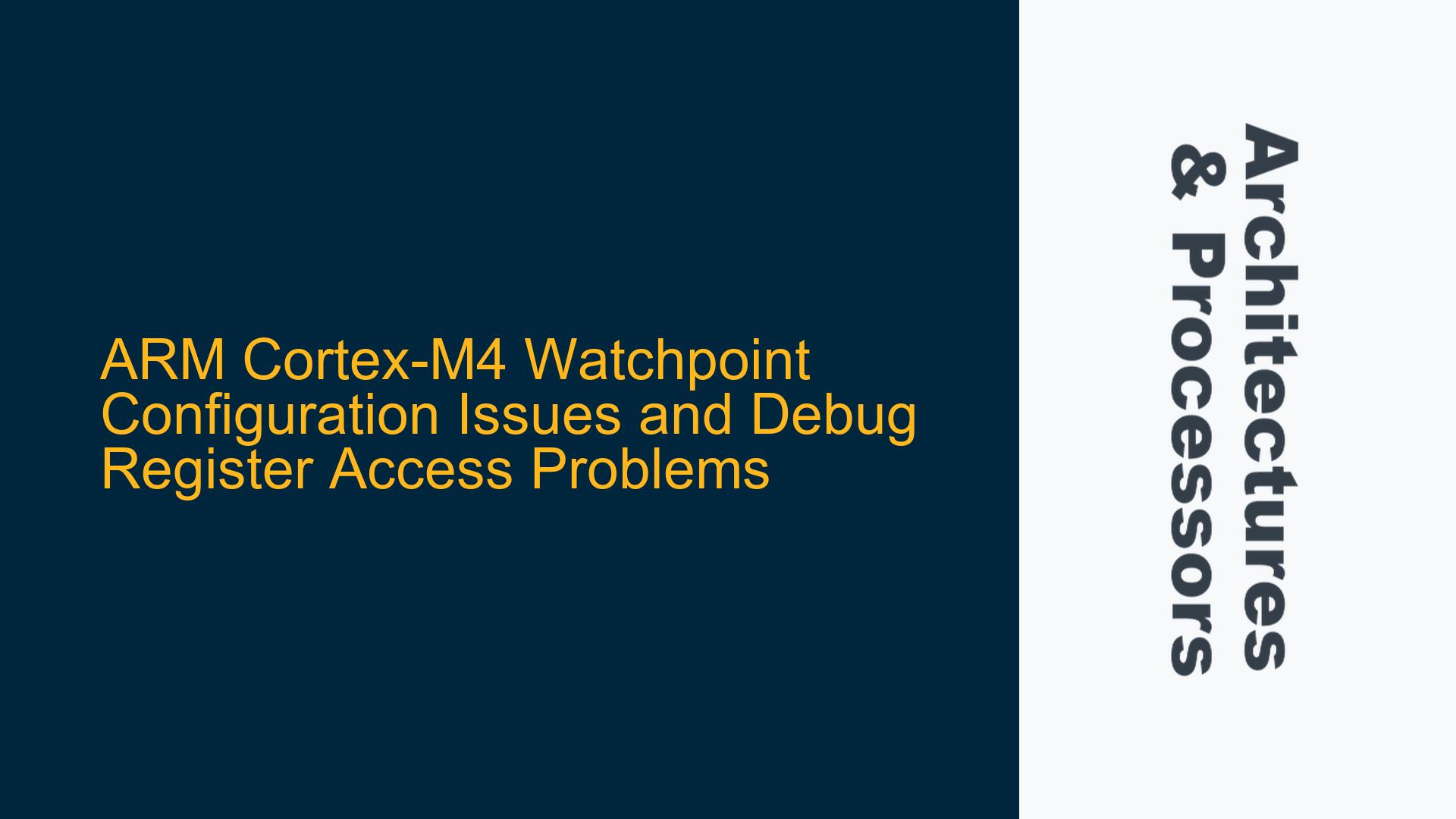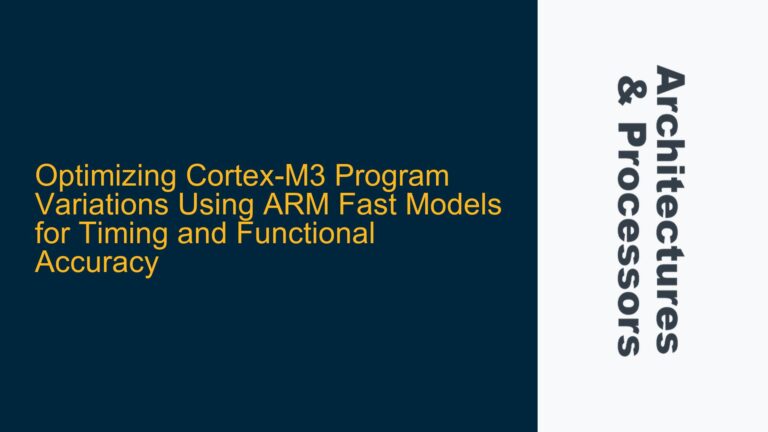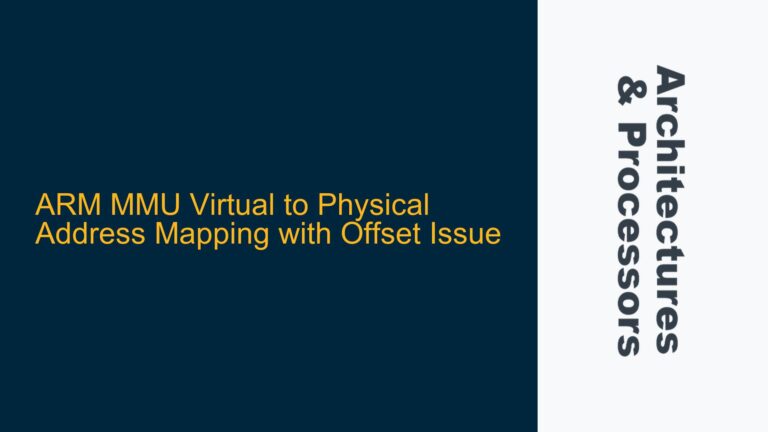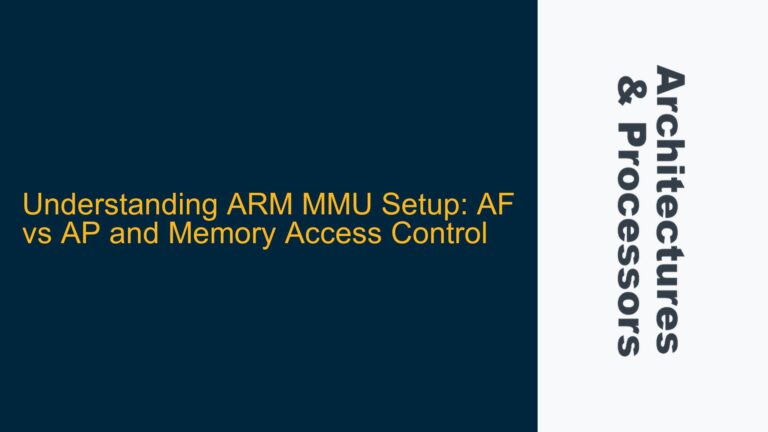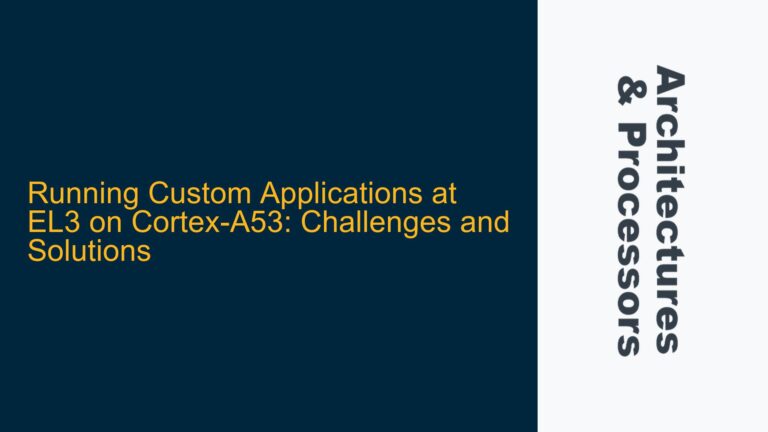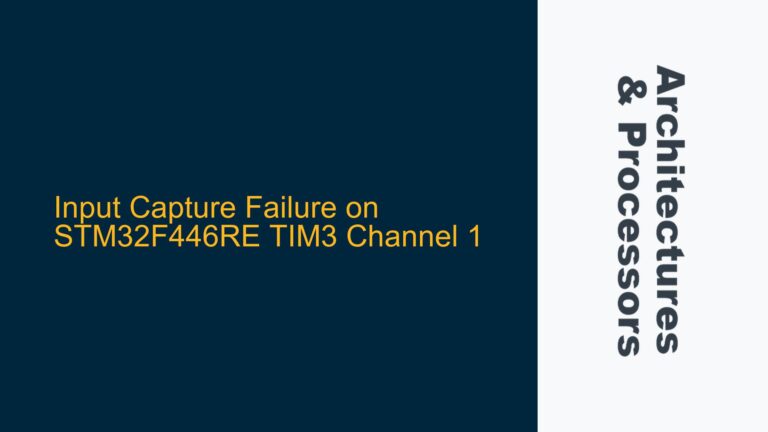Debug Watchpoint Trigger Failure and TRCENA Bit Setting Issues
The core issue revolves around the inability to configure and trigger hardware watchpoints on an ARM Cortex-M4 processor, specifically on an STM32F4 series device. The user has implemented a function to set up watchpoints using the Data Watchpoint and Trace (DWT) unit, but the watchpoints fail to trigger. Additionally, the TRCENA bit in the Debug Exception and Monitor Control Register (DEMCR) remains low despite attempts to set it, preventing the DWT from being enabled. The user also observes that the Debug Halting Control and Status Register (DHCSR) reads as zero, and the DWT Control Register (DWT_CTRL) reads as 0x40000000, indicating that the DWT is not locked but may not be fully operational.
The DWT unit in the Cortex-M4 is a powerful debugging feature that allows developers to set hardware watchpoints on specific memory addresses or data values. When a watchpoint condition is met, the processor can halt execution, allowing for detailed inspection of the system state. However, configuring the DWT requires precise setup of several registers, including the DWT Comparator Registers (DWT_COMP), DWT Mask Registers (DWT_MASK), and DWT Function Registers (DWT_FUNCTION). The DEMCR register must also be configured correctly to enable the DWT unit by setting the TRCENA bit.
The user’s code attempts to set up a watchpoint by configuring these registers, but the watchpoint does not trigger. The user also reports that the TRCENA bit in the DEMCR register remains low, even after attempting to set it. This suggests that there may be an issue with the debugger configuration, the processor’s debug mode, or the way the registers are being accessed.
TRCENA Bit Access Restrictions and Debugger Interference
The inability to set the TRCENA bit in the DEMCR register is a critical issue that prevents the DWT unit from being enabled. The TRCENA bit is responsible for enabling the DWT and other trace features. If this bit cannot be set, the DWT unit will remain disabled, and watchpoints will not trigger. There are several possible reasons why the TRCENA bit might remain low:
-
Debugger Interference: The running debugger, in this case, Atollic TrueSTUDIO, might be interfering with the setting of the TRCENA bit. Some debuggers take control of the debug registers and prevent the application from modifying them. This is often done to ensure that the debugger maintains control over the debugging session. If the debugger has locked the debug registers, any attempt by the application to modify them will be ignored.
-
Privilege Level: The Cortex-M4 processor has two privilege levels: privileged and unprivileged. Access to certain debug registers, including the DEMCR, is restricted to privileged mode. The user has confirmed that the system is running in privileged mode by reading the CONTROL register. However, if the debugger is running in a higher privilege level or has restricted access to the debug registers, the application might still be unable to modify the TRCENA bit.
-
Hardware Restrictions: Some microcontrollers, including certain STM32F4 series devices, may have hardware restrictions that prevent the TRCENA bit from being set under certain conditions. For example, if the device is in a low-power mode or if certain security features are enabled, the TRCENA bit might be locked.
-
Incorrect Register Access: The user’s code attempts to set the TRCENA bit by writing to the DEMCR register. However, if the register address or the bit position is incorrect, the write operation will not have the desired effect. The user should verify that the register addresses and bit positions in the code match the values specified in the STM32F4 reference manual.
-
Debug Mode Configuration: The Cortex-M4 processor has several debug modes, including halt mode and monitor mode. If the processor is not in the correct debug mode, the TRCENA bit might not be settable. The user should ensure that the processor is in halt mode and that the debugger is properly configured to allow access to the debug registers.
Debug Register Configuration and Watchpoint Setup Procedure
To resolve the issue, the user should follow a systematic approach to configure the debug registers and set up the watchpoints correctly. The following steps outline the necessary actions to enable the DWT unit, set the TRCENA bit, and configure the watchpoints:
-
Verify Debugger Configuration: The user should ensure that the debugger (Atollic TrueSTUDIO) is configured to allow access to the debug registers. This may involve checking the debugger settings and ensuring that it is not locking the debug registers. If necessary, the user should consult the debugger documentation or contact the debugger vendor for assistance.
-
Check Privilege Level: The user has already confirmed that the system is running in privileged mode by reading the CONTROL register. However, the user should also verify that the debugger is not running in a higher privilege level that might restrict access to the debug registers. If the debugger is running in a higher privilege level, the user should adjust the debugger settings or modify the application code to ensure that it has the necessary privileges to access the debug registers.
-
Verify Register Addresses and Bit Positions: The user should double-check the register addresses and bit positions in the code to ensure that they match the values specified in the STM32F4 reference manual. Any discrepancies in the register addresses or bit positions could prevent the TRCENA bit from being set or the watchpoints from being configured correctly.
-
Enable the DWT Unit: Before setting up the watchpoints, the user must enable the DWT unit by setting the TRCENA bit in the DEMCR register. The following code snippet demonstrates how to set the TRCENA bit:
#define DEMCR_ADDR 0xE000EDFC #define DEMCR (*((volatile uint32_t *)DEMCR_ADDR)) void enable_dwt() { DEMCR |= (1 << 24); // Set the TRCENA bit to enable the DWT unit }The user should call this function before attempting to configure the watchpoints.
-
Configure the Watchpoints: Once the DWT unit is enabled, the user can configure the watchpoints using the DWT Comparator, Mask, and Function registers. The following code snippet demonstrates how to set up a watchpoint on a specific memory address:
#define DWT_COMP_0_ADDR 0xE0001020 #define DWT_MASK_0_ADDR 0xE0001024 #define DWT_FUNCTION_0_ADDR 0xE0001028 #define DWT_COMP_0 (*((volatile uint32_t *)DWT_COMP_0_ADDR)) #define DWT_MASK_0 (*((volatile uint32_t *)DWT_MASK_0_ADDR)) #define DWT_FUNCTION_0 (*((volatile uint32_t *)DWT_FUNCTION_0_ADDR)) void set_watchpoint(uint32_t address, uint32_t mask, uint8_t access_mode) { DWT_COMP_0 = address; // Set the address to watch DWT_MASK_0 = mask; // Set the mask to specify the address range DWT_FUNCTION_0 = (access_mode & 0x3) | 0x4; // Set the access mode and enable the watchpoint }The user should call this function with the appropriate parameters to set up the watchpoint. The
addressparameter specifies the memory address to watch, themaskparameter specifies the address range, and theaccess_modeparameter specifies the type of access (read, write, or read/write) that should trigger the watchpoint. -
Verify Watchpoint Configuration: After setting up the watchpoint, the user should verify that it has been configured correctly by reading the DWT Comparator, Mask, and Function registers. The user should also check the DWT Control Register (DWT_CTRL) to ensure that the watchpoint is enabled and that the DWT unit is operational.
-
Debugging and Testing: The user should test the watchpoint by performing the specified memory access and verifying that the processor halts execution when the watchpoint condition is met. If the watchpoint does not trigger, the user should recheck the register configurations and ensure that the DWT unit is enabled.
-
Consult the Reference Manual: If the issue persists, the user should consult the STM32F4 reference manual and the ARM Cortex-M4 Technical Reference Manual for additional information on the DWT unit and debug register configurations. The reference manuals provide detailed descriptions of the registers and their bit fields, as well as examples of how to configure the DWT unit for various debugging scenarios.
By following these steps, the user should be able to resolve the issue and successfully configure and trigger hardware watchpoints on the ARM Cortex-M4 processor. If the issue is related to debugger interference or hardware restrictions, the user may need to adjust the debugger settings or consult the microcontroller vendor for further assistance.
